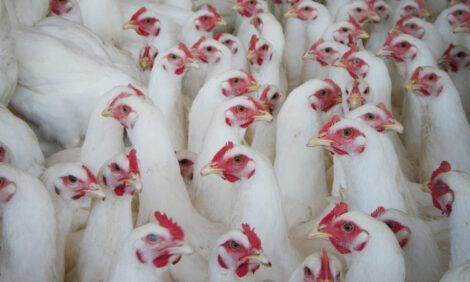



Phosphorus Utilisation in Finishing Broiler Chickens: Effects of Dietary Calcium and Microbial Phytase
Researchers based in France have observed that it is possible to decrease phosphorus levels in finishing broilers as long as the calcium content is sufficient but decreasing the level of either mineral reduces bone mineralisation.A decrease in dietary phosphorus, especially in finishing broilers (21 to 38 days old), is a crucial issue in poultry production from an environmental and economic point of view, according to Xaviere Rousseau of INRA in Nouzilly, France and co-authors there and Agriculture et Agroalimentaire Canada, and with BNA Nutrition Animale in France. In the introduction to their paper published in Poultry Science, they add that, nevertheless, phosphorus must be considered together with other dietary components such as calcium and microbial phytase.
Different corn and soybean meal-based diets varying in calcium (low, LCa, 0.37 per cent; medium, MCa, 0.57 per cent; high, HCa, 0.77 per cent) and non-phytate phosphorus (nPP; low, LnPP, 0.18 per cent; high, HnPP, 0.32 per cent) content were tested with and without microbial phytase (0 or 500 phytase units per kg; FTU/kg).
Feed intake, bodyweight gain, bone mineralisation and mineral retention were examined in 144 Ross PM3 broilers (22 to 38 days old) reared in individual cages.
Growth performance was not significantly affected by the treatments. Nevertheless, a numerical decrease of average daily gain and average daily feed intake was observed in HCa-LnPP and LCa-HnPP associated with an increase of feed conversion ratio.
Decreased dietary calcium reduced tibia ash content (Ca, linear: P<0.001; quadratic: P=0.034) and tibia ash weight for the highest level of nPP (Ca×nPP; P=0.035).
In parallel, increasing dietary calcium reduced the flow of retained phosphorus (P=0.022) but also tibia ash weight in LnPP diets (Ca×nPP; P=0.035).
The responses of the animals in terms of tibia ash content and phosphorus retention were improved by the addition of microbial phytase especially for the lowest phosphorus diets (nPP×phytase, P=0.021 and P=0.009; respectively).
Phytase increased dry tibia weight, bone breaking strength and tibia diameter in broilers fed the highest calcium diets (Ca×phytase; P<0.05).
Rousseau and co-authors concluded that is possible to decrease phosphorus levels in finishing broilers if the calcium content is appropriate. Nevertheless, they added, decreasing the dietary phosphorus and calcium cannot allow a maximisation of bone mineralisation but the optimal threshold remains to be determined.
Reference
Rousseau X., M.P. Létourneau-Montminy, N. Même, M. Magnin, Y. Nys and A. Narcy. 2012. Phosphorus utilization in finishing broiler chickens: Effects of dietary calcium and microbial phytase. Poult. Sci. 91 (11):2829-2837. doi: 10.3382/ps.2012-02350
Further ReadingYou can view the full report (fee payable) by clicking here. |
January 2013











